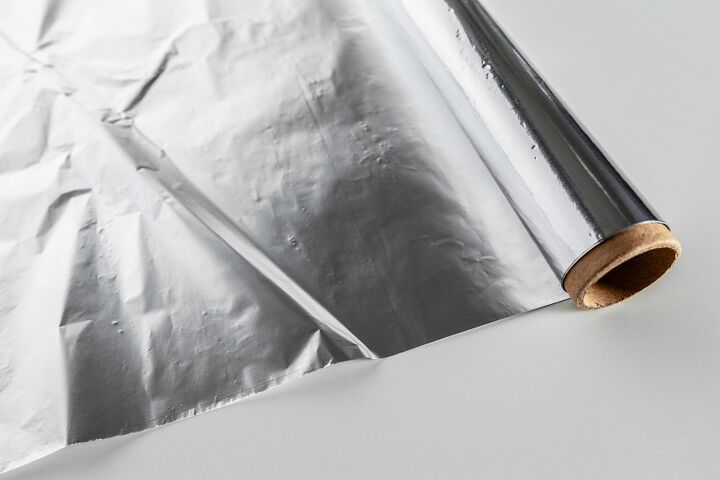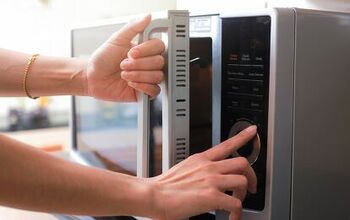Do Mice Hate Aluminum Foil? (Find Out Now!)

Do you have a mice problem? If not addressed quickly, a mice infestation in the home can become a serious nuisance. Fortunately, you don’t have to rush to a local retailer and buy mice traps that could be harmful to your young children or pets. Instead, there are a number of natural ways to rid your home of these pesky rodents. Aluminum foil is frequently featured online as an anti-rodent “life hack.”
This brings us to the question – do mice hate aluminum foil? Yes, mice do hate aluminum foil. They tend to avoid aluminum foil, as the sharp texture deters them from wanting to chew, dig, or walk on it. Not only does the noise of aluminum foil scare them, but mice are also unable to properly chew through it.
Though, aluminum foil is simply a repellent material that discourages mice. It seldom solves the whole problem, contrary to popular belief. Home remedies for ridding your home of mice should always be done alongside other, more effective methods.
Do You Need Pest Control Services?
Get free, zero-commitment quotes from pro contractors near you.

Why Do Mice Hate Aluminum Foil?
Simply put, mice detest aluminum foil, and other forms of thin sheet metal, because they are unable to chew through it properly. Generally speaking, the sharp points and grooves of aluminum foil, as well as the noise it makes, is known to scare mice. Because of its sharp, but oddly smooth, texture, mice don’t like to dig through aluminum foil. It causes mice to be hesitant to approach and chew on the material.
If you crumple up some aluminum foil or use it to cover potential entry points, you’ll notice that the mice will no longer try enter your home through these holes. Since they don’t like to dig or chew the foil, this will prevent them from even trying. Other types of metal, like wire mesh, can also be used to cover holes and cracks in areas that mice can fit through.
Mice can chew or eat their way through a number of materials, including paper, plastic, dense cardboard, and even insulation. However, mice won’t even try to chew through aluminum foil. Another metal material that many suggest is effective at solving mice issues is steel wool, which mice also cannot chew through.
If you need additional protection, consider covering a surface where you find mouse droppings with aluminum foil or steel wool. So, if you found mouse droppings on your countertops, cover it with aluminum foil before you go to sleep in the evening. Then, fold it up in the morning and repeat the process again each evening.
How to Keep Mice Away Using Aluminum Foil
It’s not enough to simply know that mice hate aluminum foil, you also need to know how and where to place the foil for it to be most effective at repelling the rodents. It doesn’t make sense to just place aluminum foil anywhere and everywhere throughout your home. Not only does this waste foil, but it can also make your home look untidy and unkempt. Instead, you want to place aluminum foil in areas of your home where you’ve observed a high concentration of mouse activity.
Look for the areas that mice may be entering your home, and set traps or roadblocks with the foil to restrain mice from entering your home. To find the areas where mice are entering your house, look out for droppings and gaps in your house that may suggest mice were or are nearby. Other common indications of mouse activity include scratching, bite marks, and mouse hair.
After identifying the potential entry points, simply ball up the aluminum foil and put it the cracks and holes. Then, use tape to hold the aluminum in place and prevent mice from pushing it out of the way. As previously mentioned, steel wool can be used either in addition or in place of aluminum foil, as mice cannot chew through either material.
Other Ways to Keep Mice Away
Whether the aluminum foil isn’t working properly or you want to use other methods to remove mice out of your home, there are alternatives. Generally speaking, a two-part approach works best at ridding your home of mice. First, it’s advised that you place traps (live or lethal) and then work on making your home both inaccessible and inhospitable to the tiny rodents.
That said, consider any of the following methods as an alternative to using aluminum foil to keep mice away from your home:
1. Use humane traps
Humane traps, like cage traps, catch the mouse alive. When the mouse steps onto the baited pan inside the trap, a mechanism is tripped and the door shuts. It traps the mouse without killing it. These traps should be placed parallel to your walls, so the mouse will run into them. Put them in dark corners, behind furniture, or in areas where you find bite marks and/or droppings.
For quick results, set at least a dozen traps. If you don’t catch any mice within three days, remove the traps and then set them again a few days later in a different locations and positions. When you catch a mouse, always handle the trap using gloves and disinfect afterwards. You can then either release the mouse outdoors over a half a mile from your house or call a local veterinary clinic and see if they humanely kill rodents.
2. Consider lethal trapping
Lethal traps, like snap traps, are easy to use and kill the mouse almost immediately. Of all the types of lethal traps, snap traps are the least inhumane option. When the mouse attempts to grab the bait, the device snaps onto the neck to kill it. Glue traps, however, are not recommended because they are considered very inhumane.
3. Experiment with bait
Your traps will most successful if you use desirable bait. Bacon, whole nuts, peanut butter, and even small cotton pieces (used for nesting) are great bait options for mice. For best results, use tiny pieces of bait and a variety of different traps with different bait. Using fresh bait and replacing it frequently will also increase your chances of success.
4. Use poison as a last resort
Poison is most often used for farms, not residential homes. Rats that die of poison usually end up in your walls or other places that make clean-up difficult. Not to mention, poison is very unsafe to have around children, pets or livestock. With that said, only consider using poisons for grain storage areas or other locations that need continuous protection.
Do You Need Pest Control Services?
Get free, zero-commitment quotes from pro contractors near you.

5. Make your property less mouse-friendly
The goal is to make your home undesirable to mice so that they move on. In general, minimizing shelter, food, and water sources are often very effective for rodent control.
- Clean your kitchen often and keep food stored in tightly sealed containers.
- Use tight-fitting lids on all trash cans.
- Keep piles of brush, junk, and other materials in your yard clear to limit shelter for mice.
- Keep taps closed inside and empty or cover all outdoor water sources.
- Don’t leave out your pet’s food and water bowls.
6. Try essential oils
Essential oils are widely understood as great mice repellents. Since mice have an acute sense of smell, you can exploit that. Peppermint oil is a popular choice because of its strong smell that mice find unpleasant. Simply dip the oil in cotton balls and place them around entry points and cracks throughout your home. Place the cotton balls every few days to ensure that the smell doesn’t fade.
While the smell of clove may be pleasant to humans, it is not for mice. You can use clove essential oil or whole cloves to help deter mice. However, the oil tends to be more effective as it has a much stronger scent than whole cloves. Like peppermint oil, put the clove oil on cotton balls and place them in areas of your home that have seen mouse activity.

Jessica considers herself a home improvement and design enthusiast. She grew up surrounded by constant home improvement projects and owes most of what she knows to helping her dad renovate her childhood home. Being a Los Angeles resident, Jessica spends a lot of her time looking for her next DIY project and sharing her love for home design.
More by Jessica Stone



























